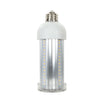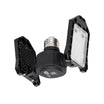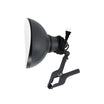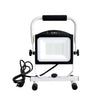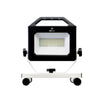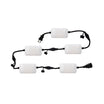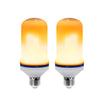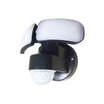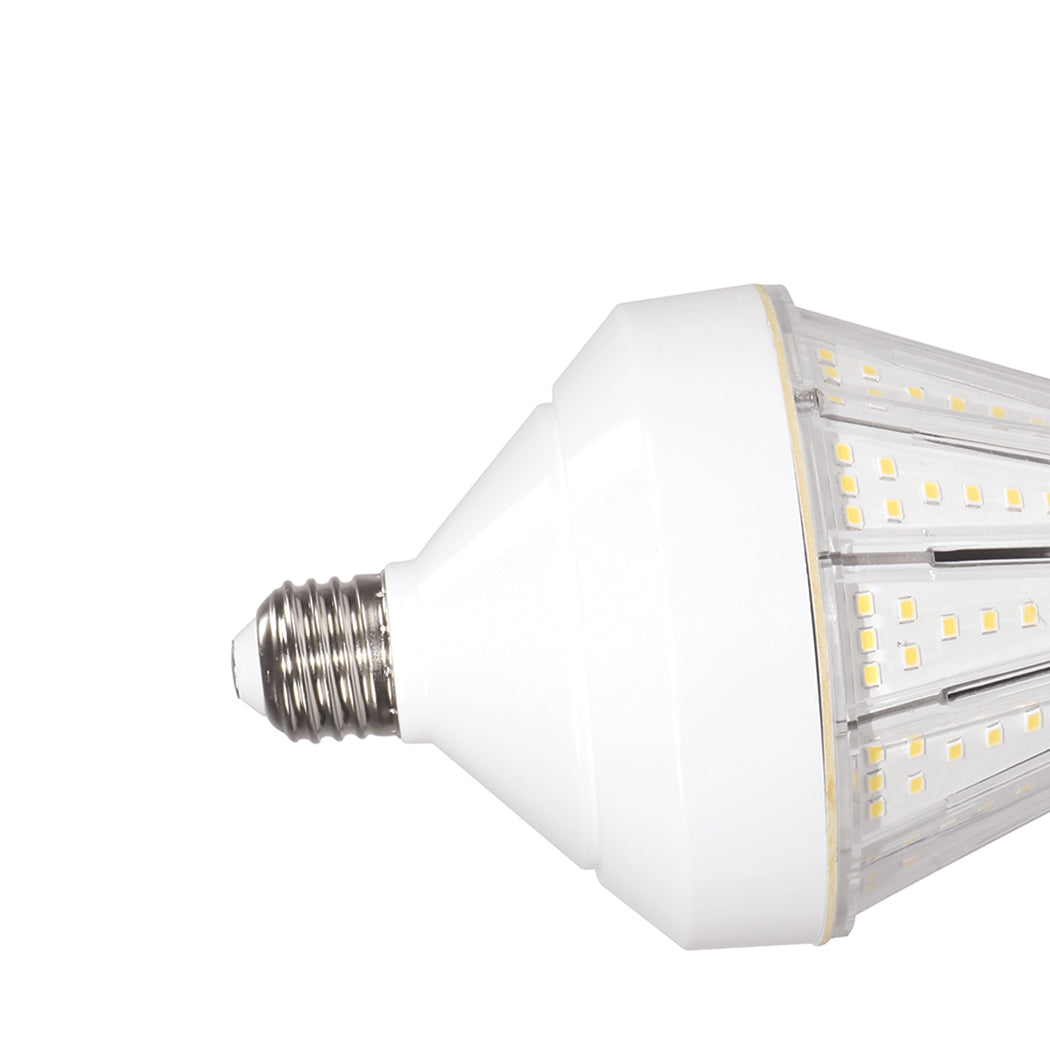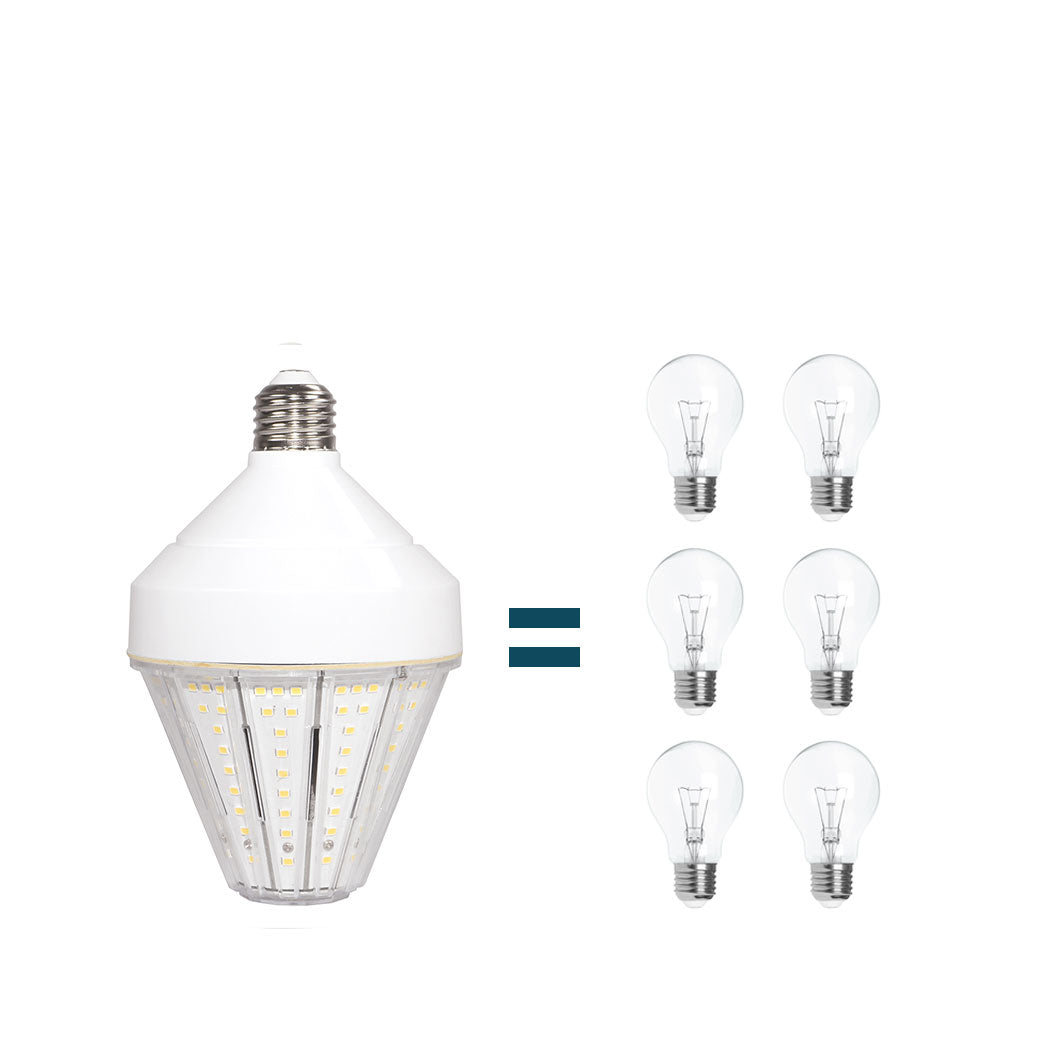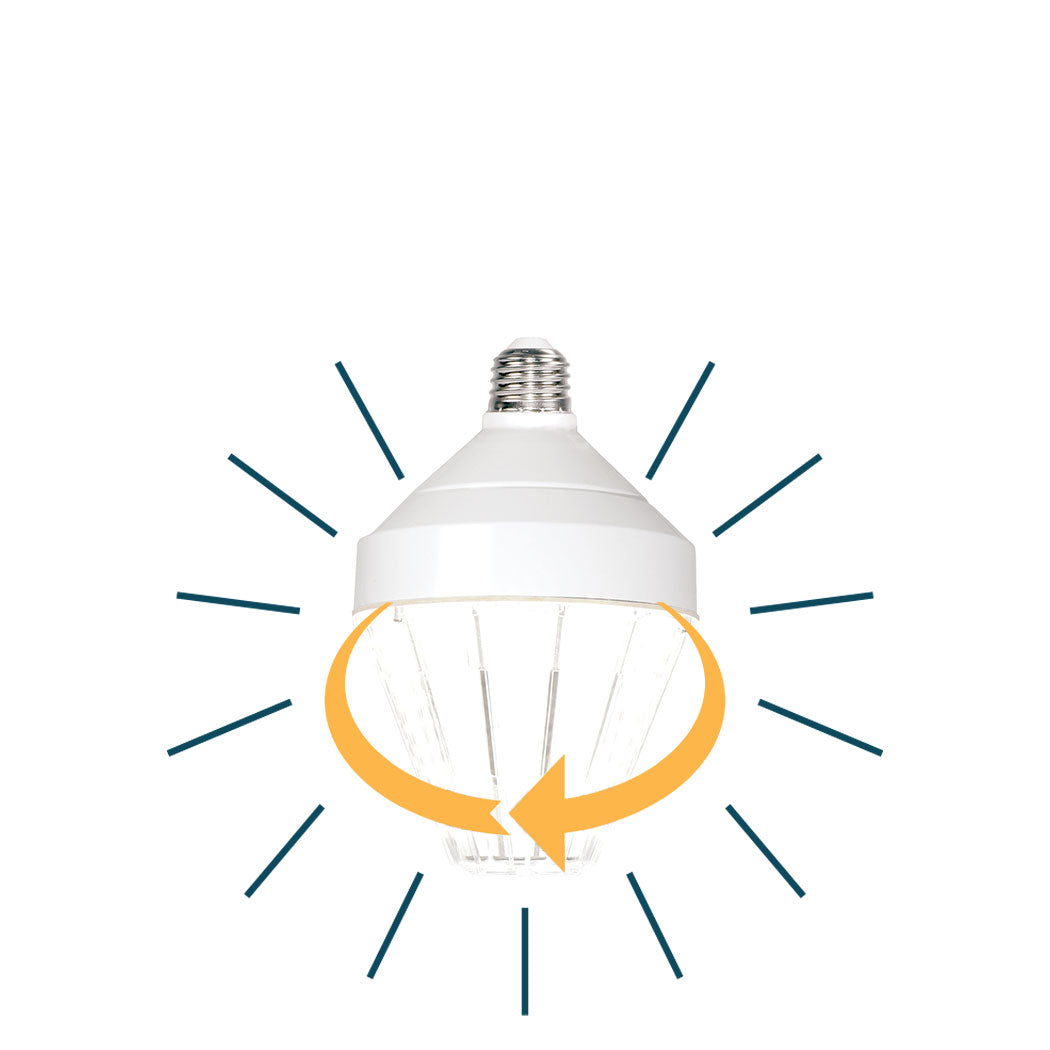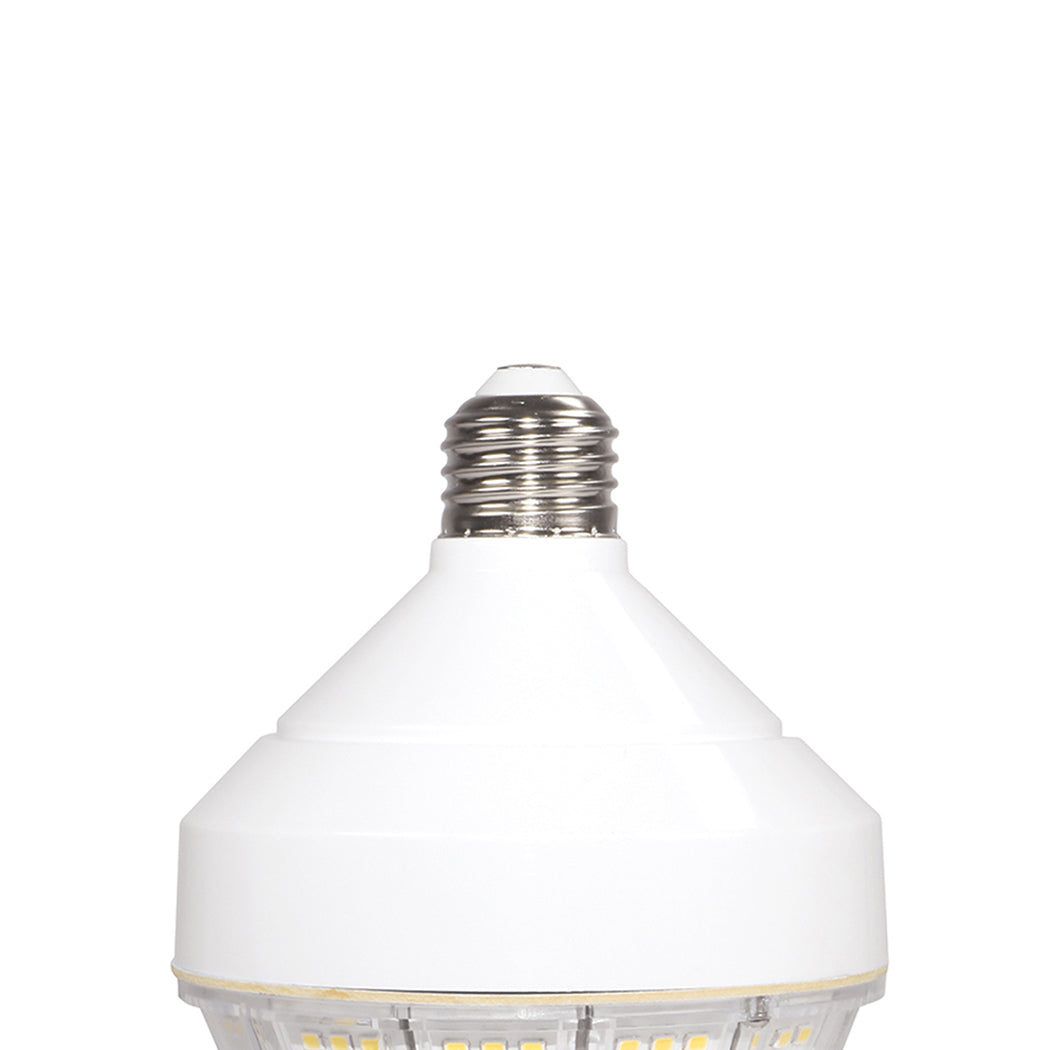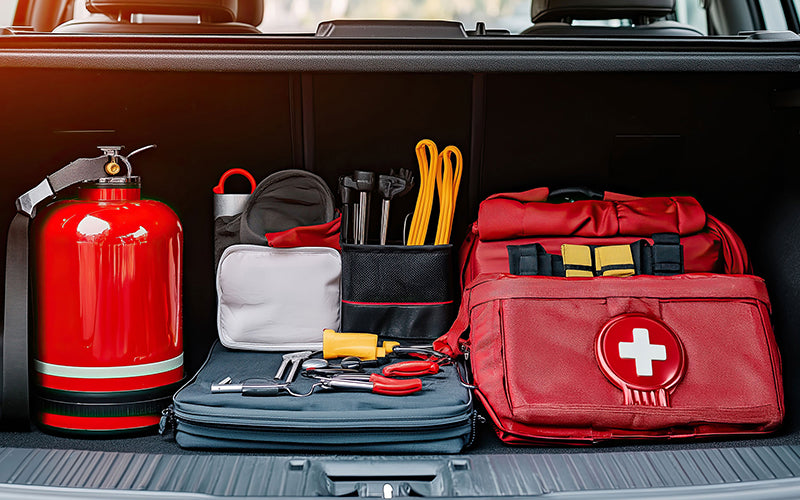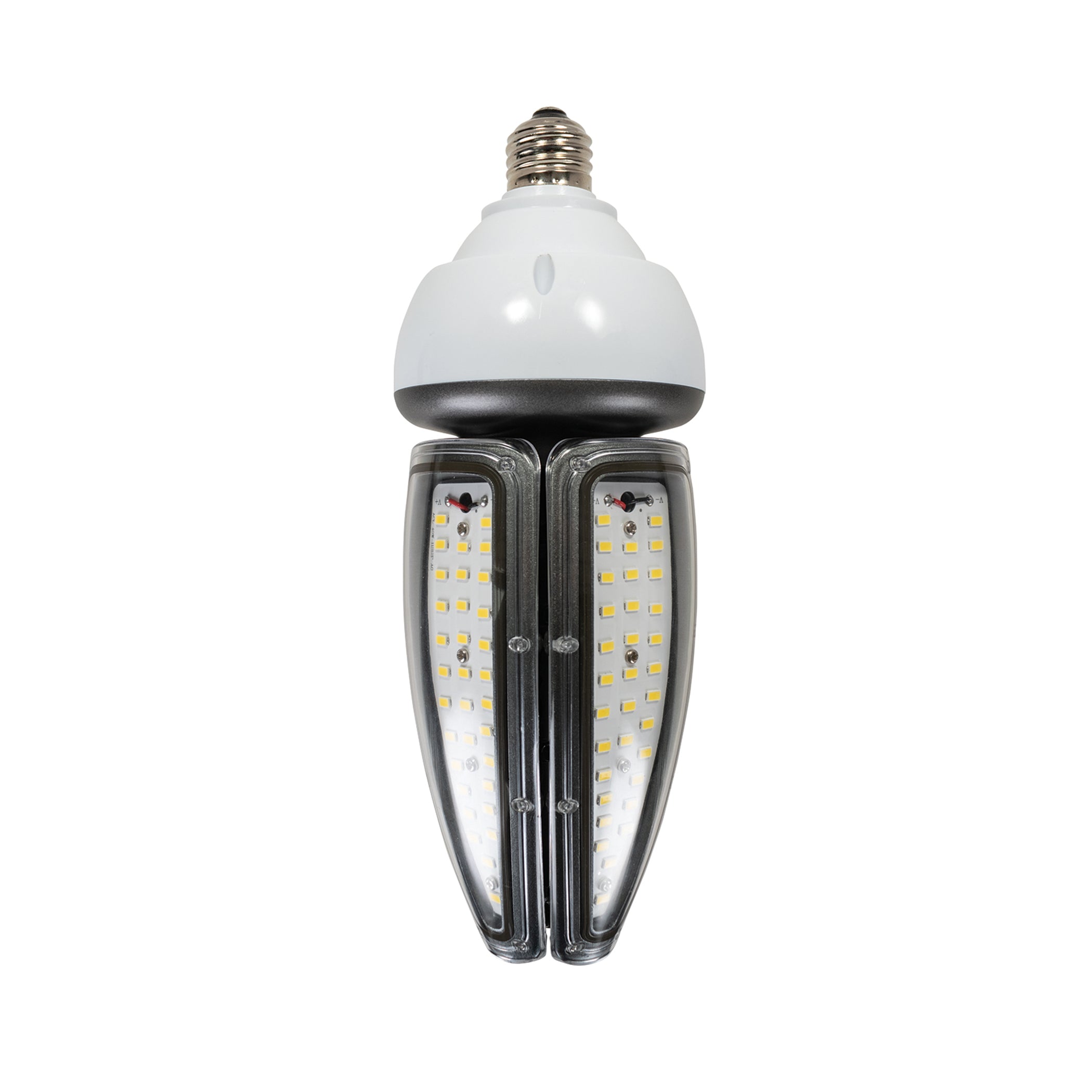

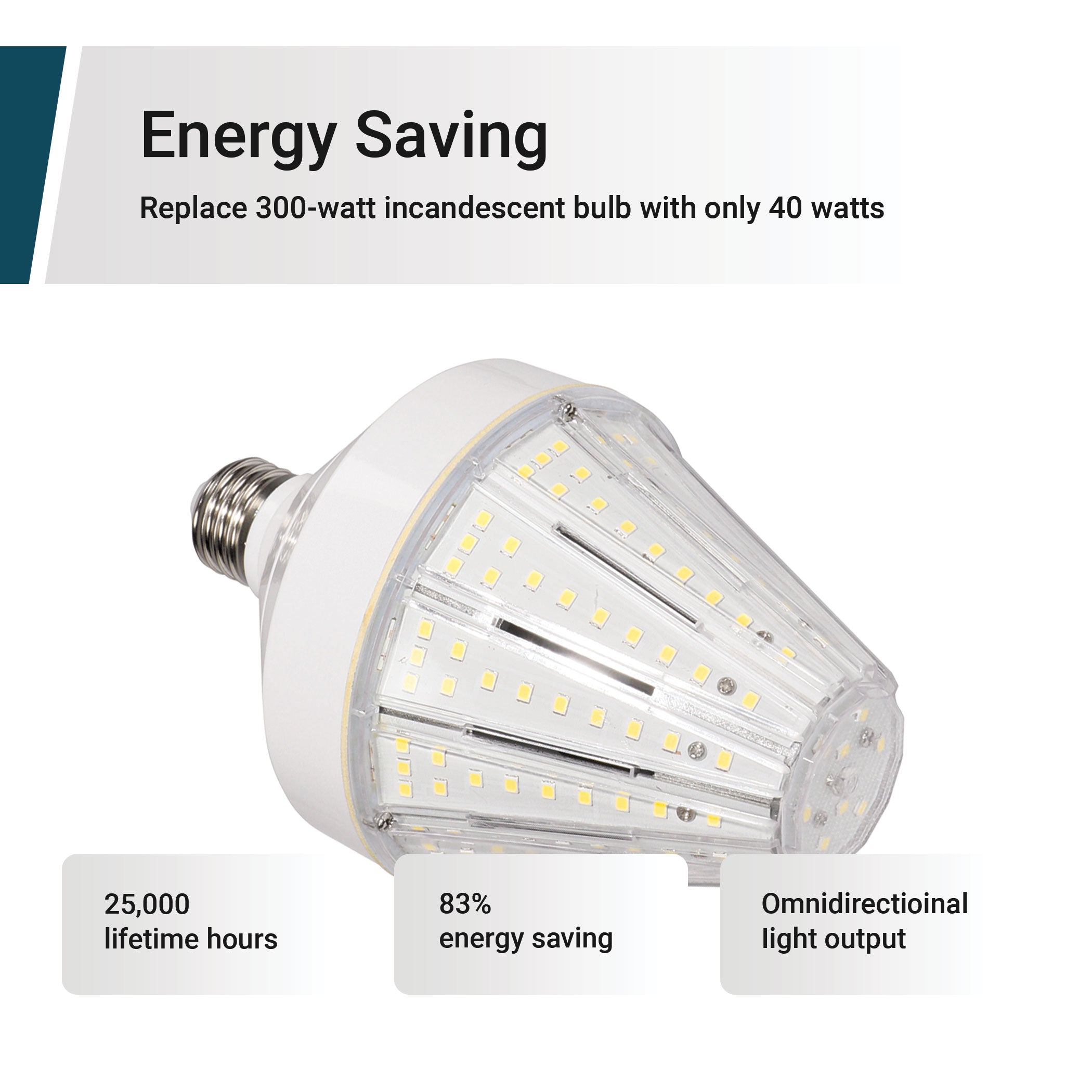
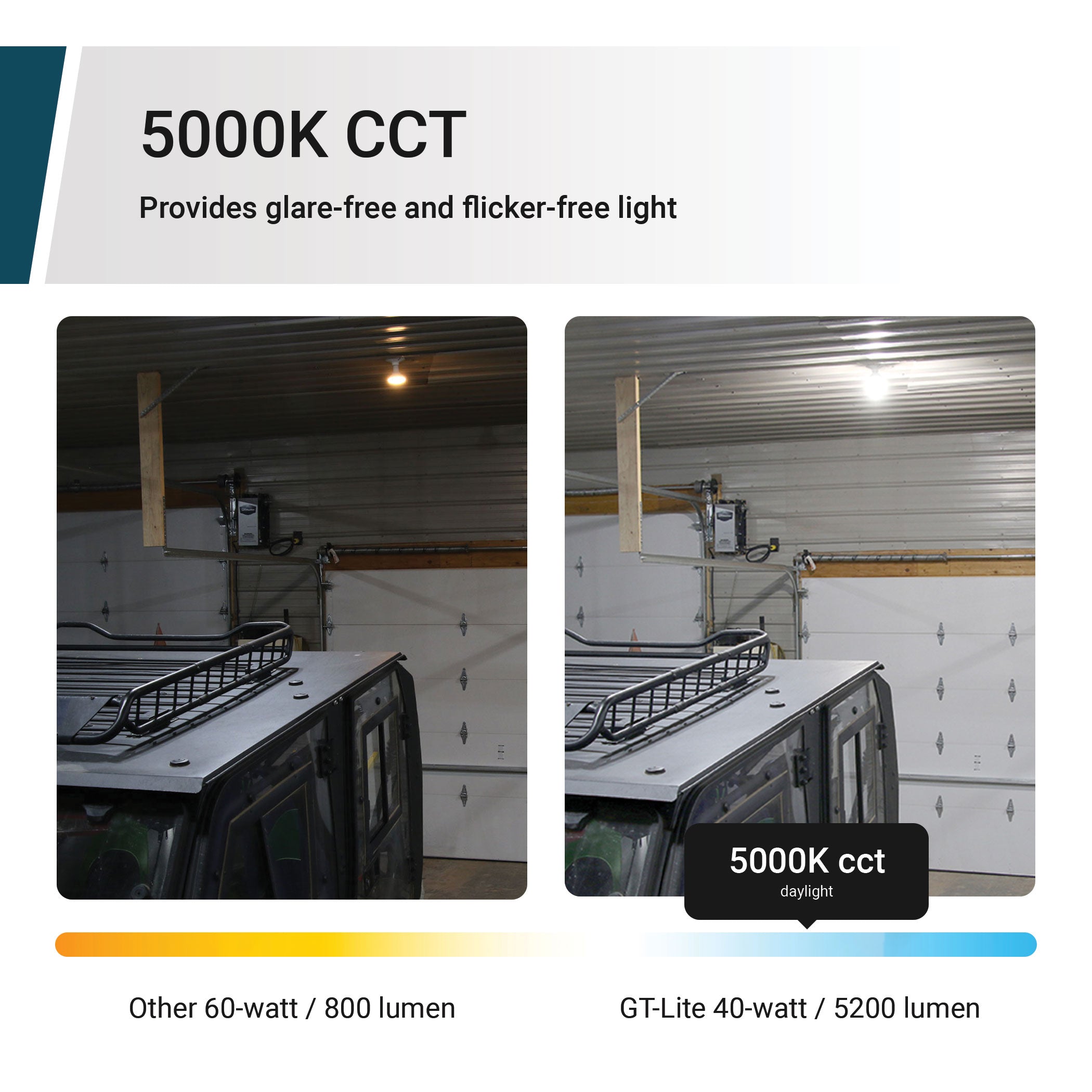
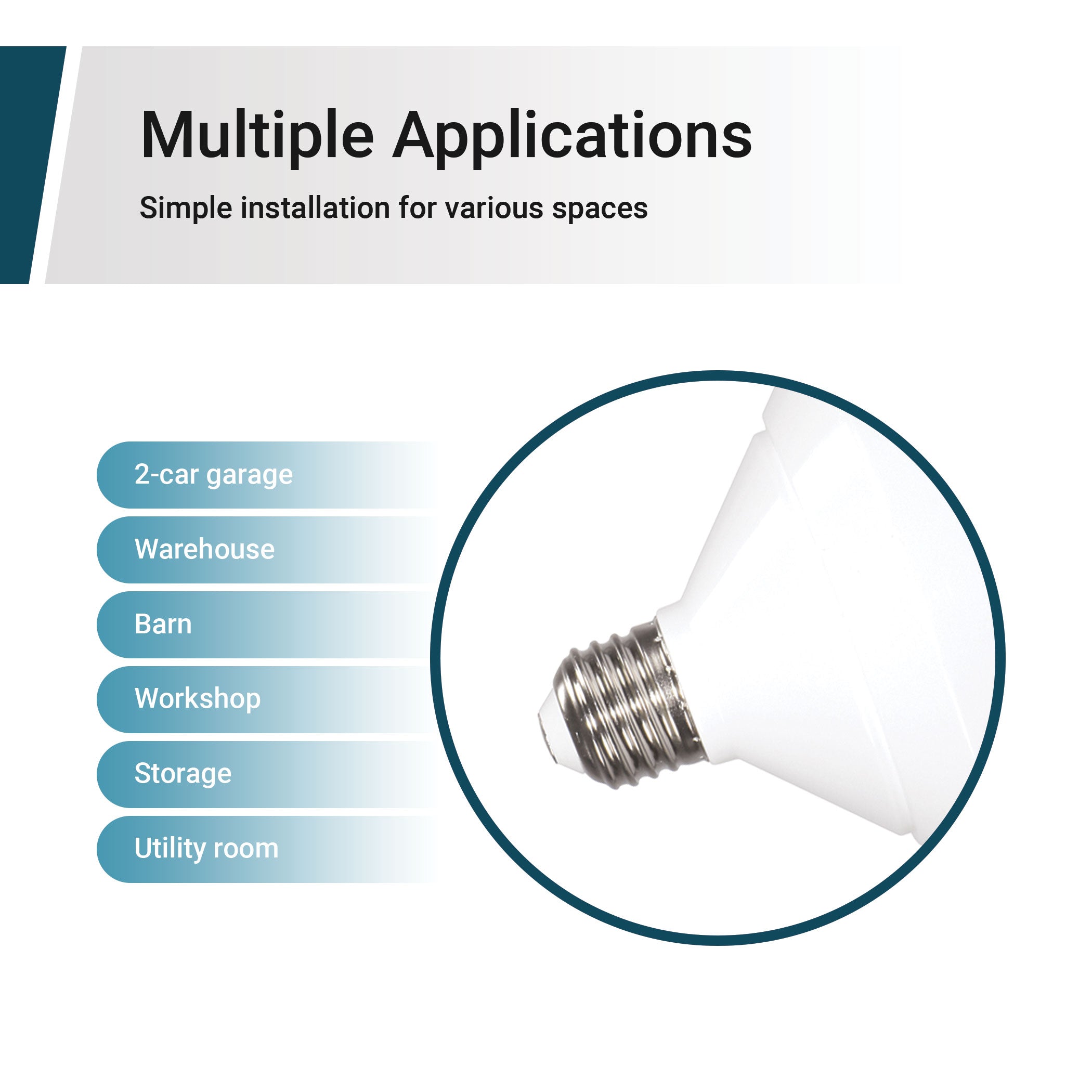

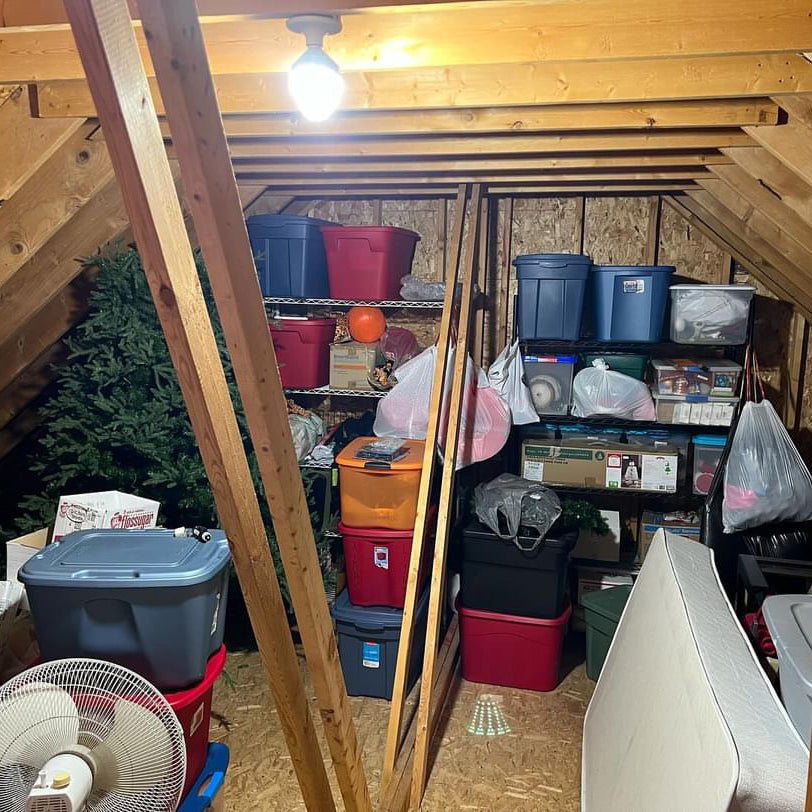
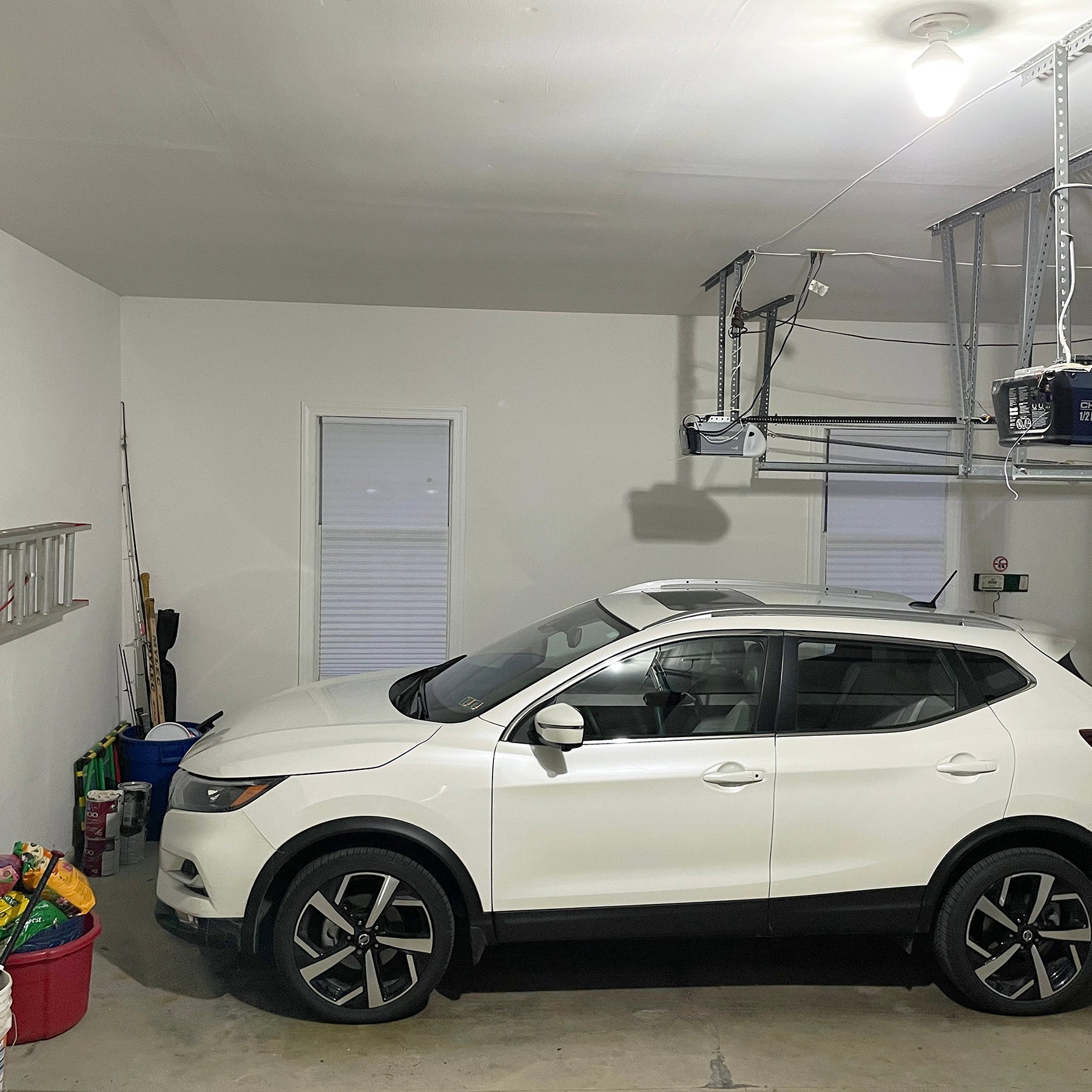
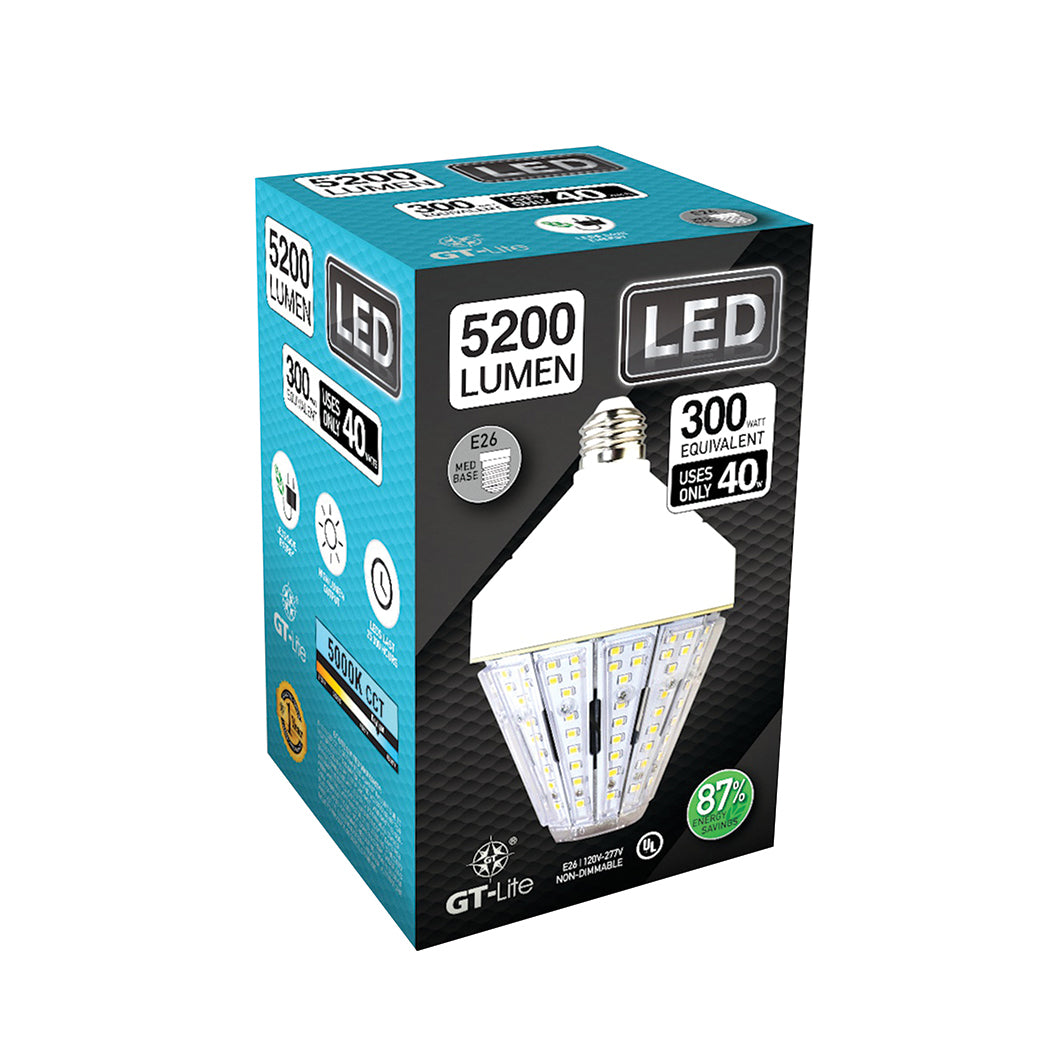
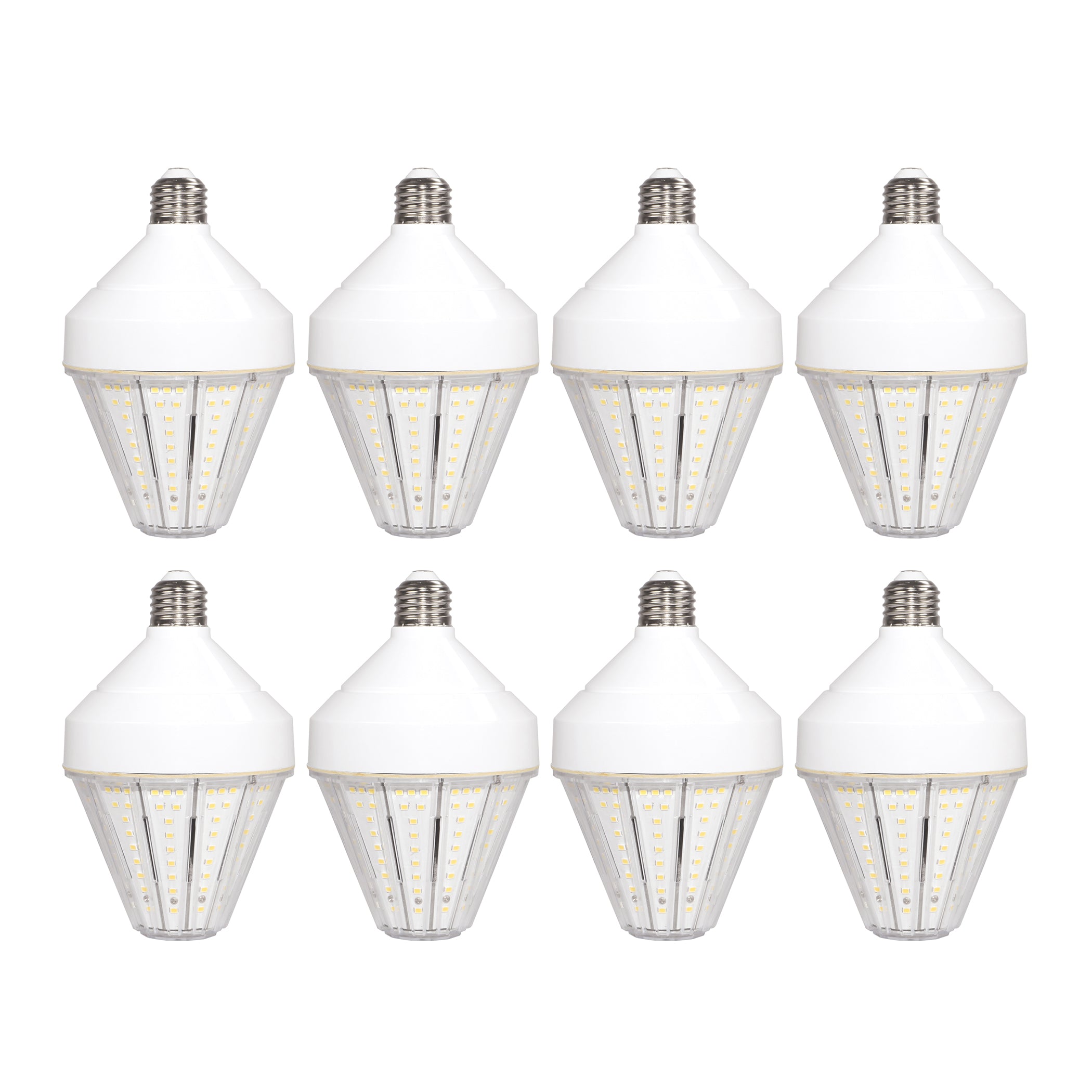
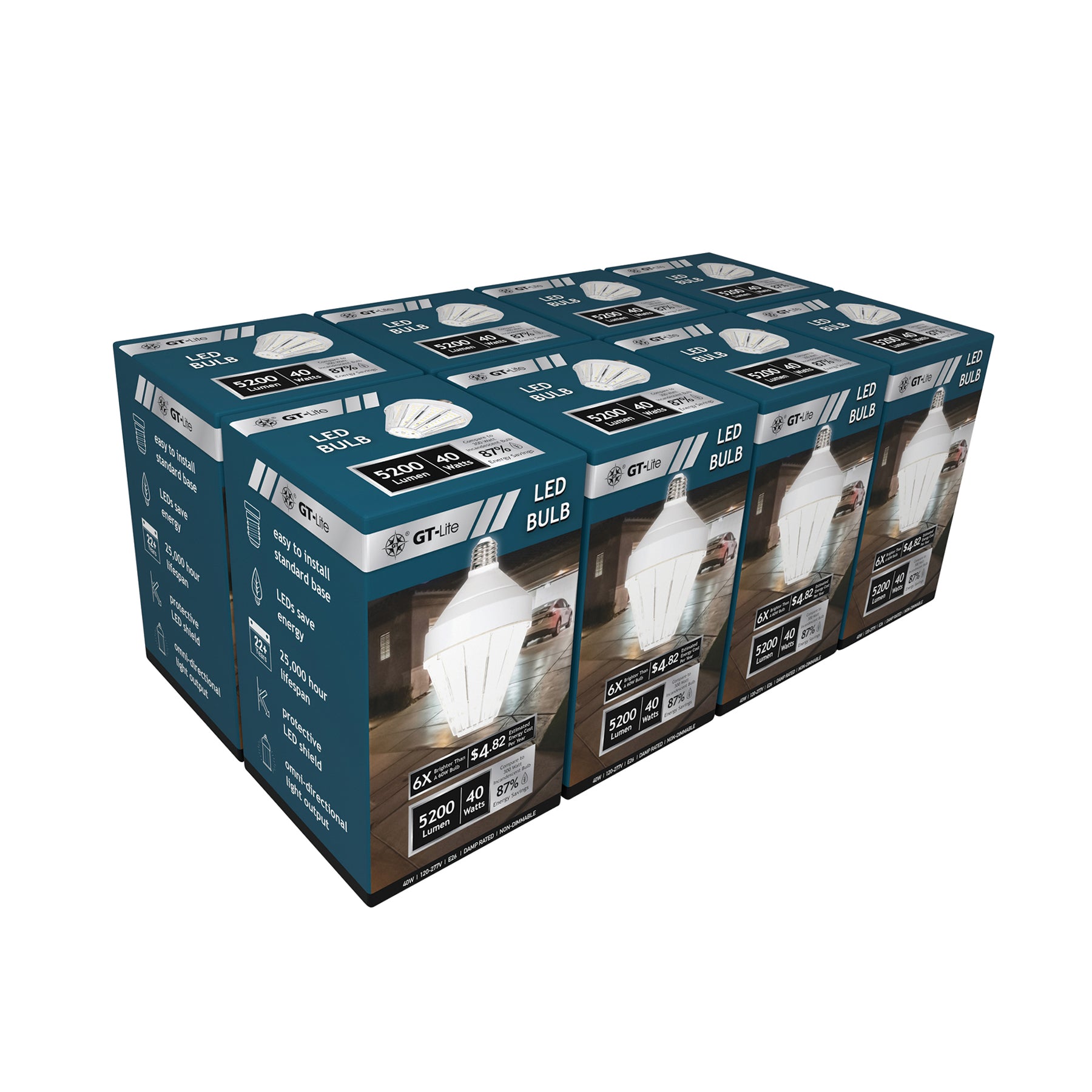
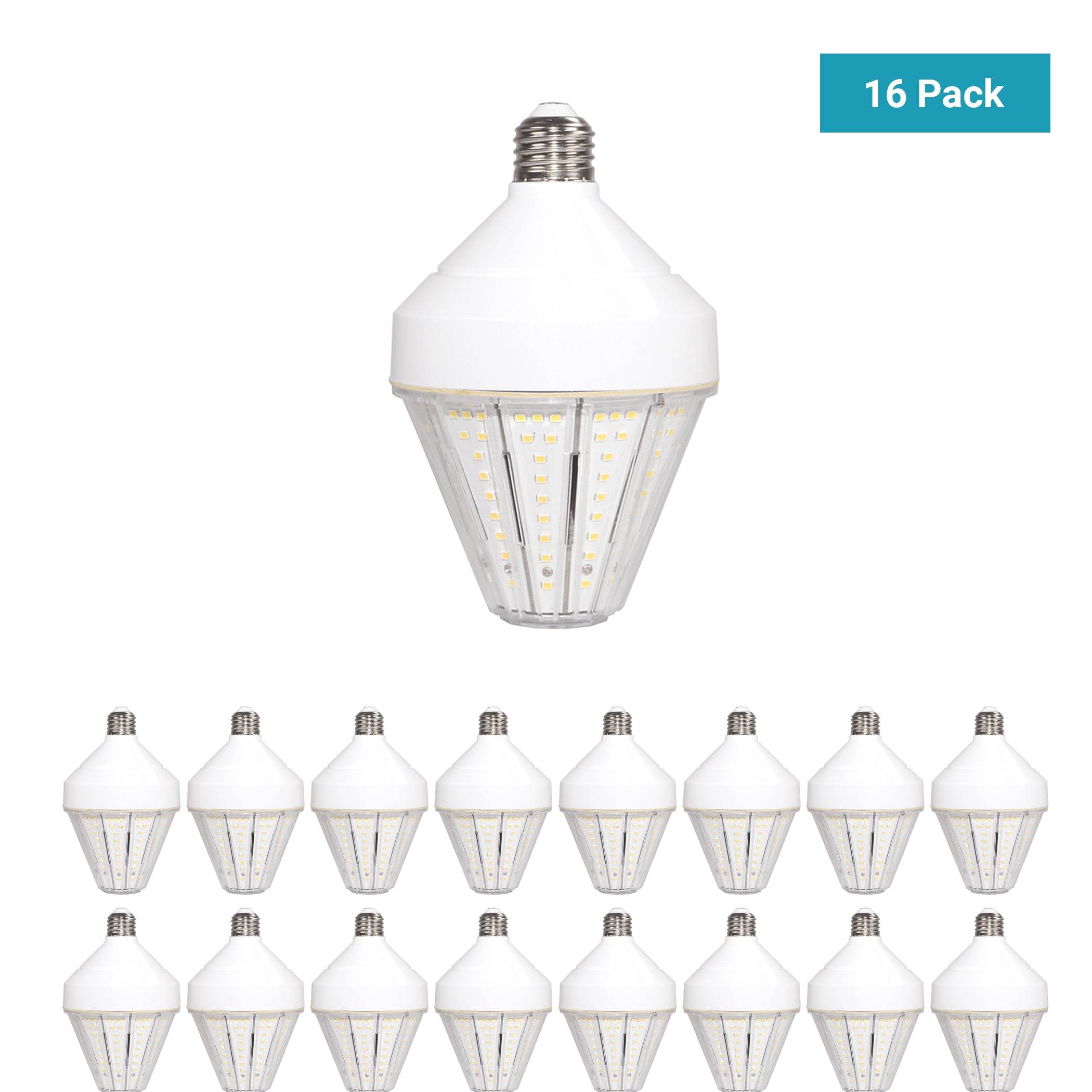
5200 Lumen LED Corn Cob Bulb ,40-Watt, 300-Watt Equivalent, 5000K Daylight, E26
Save 20% on Best Seller Bulbs. Save an Extra 5% on 8-Pack and 10% on 16-Pack
Extra 5% off on purchases $500 or more
Extra 8% off on purchases $1,000 or more
Extra 10% off on purchases $2,000 or more
Extra 15% off on purchases $5,000 or more
Extra 20% off on purchases $10,000 or more
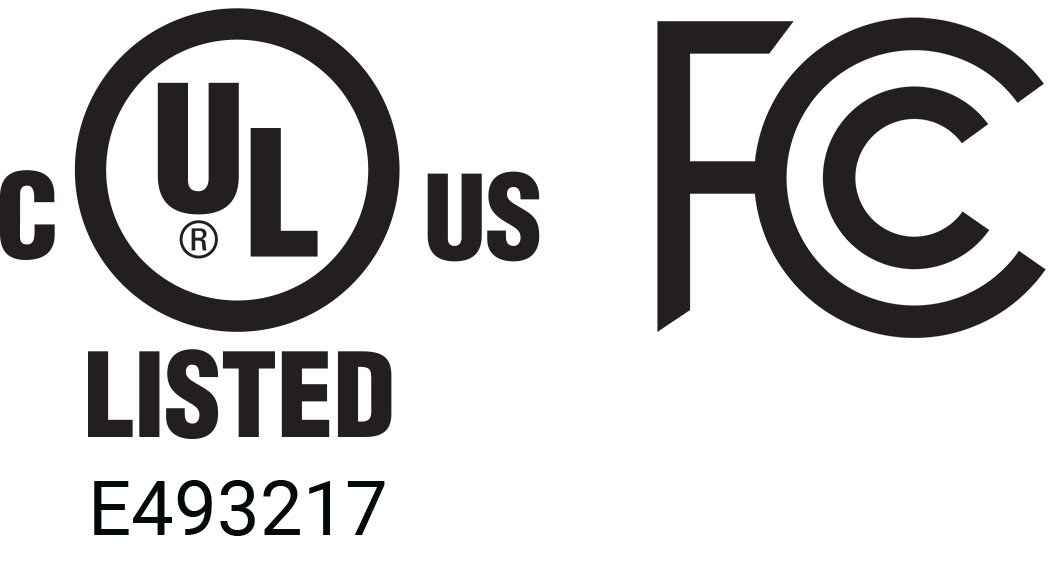
• FREE US Shipping on orders above $100
• 30 days money back guarantee
• Manufacturer's warranty
• US based customer support

E26 medium base
Multiple Applications
Garage
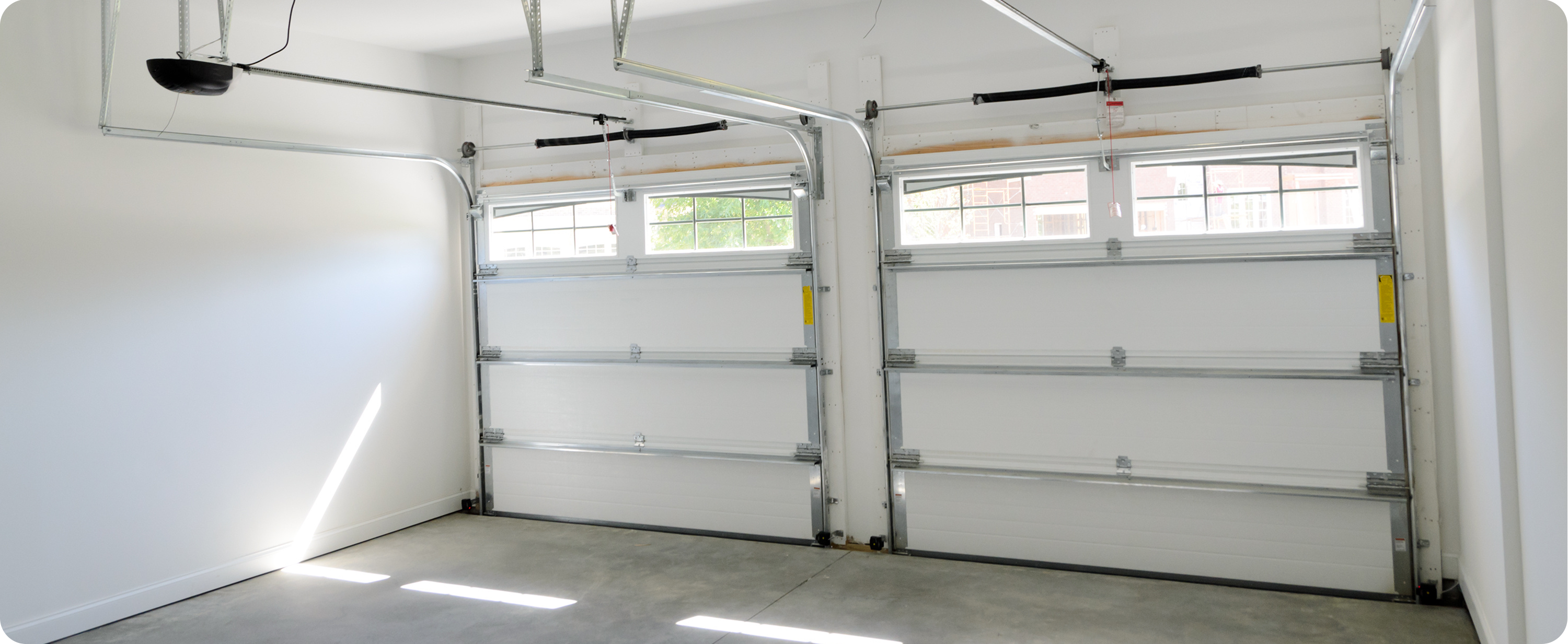
Warehouse

Basement

Barn

Utlity Room






5000K bright daylight white
Experience Brighter, Energy-Efficient Lighting with GT-Lite
Slide to see the difference
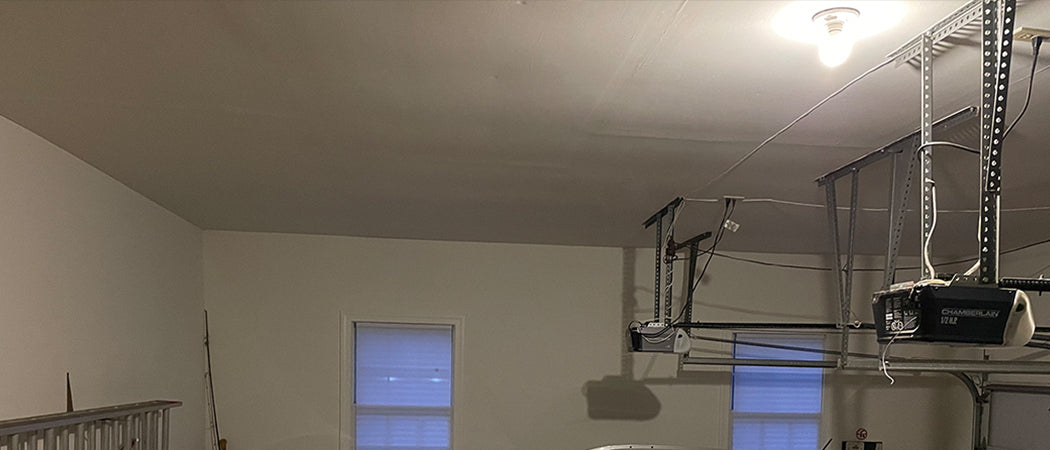
Others
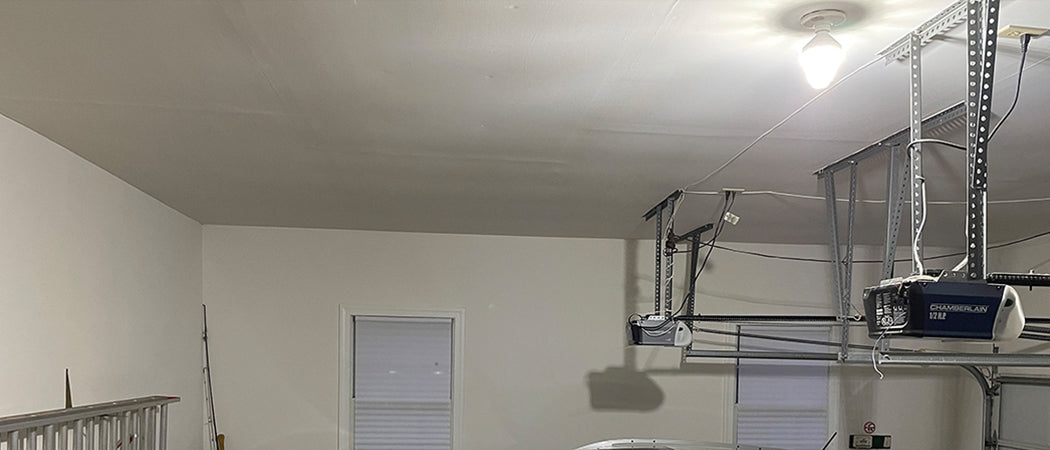
GT-Lite LED bulb
Product compare
Pick the Right One for Your Space
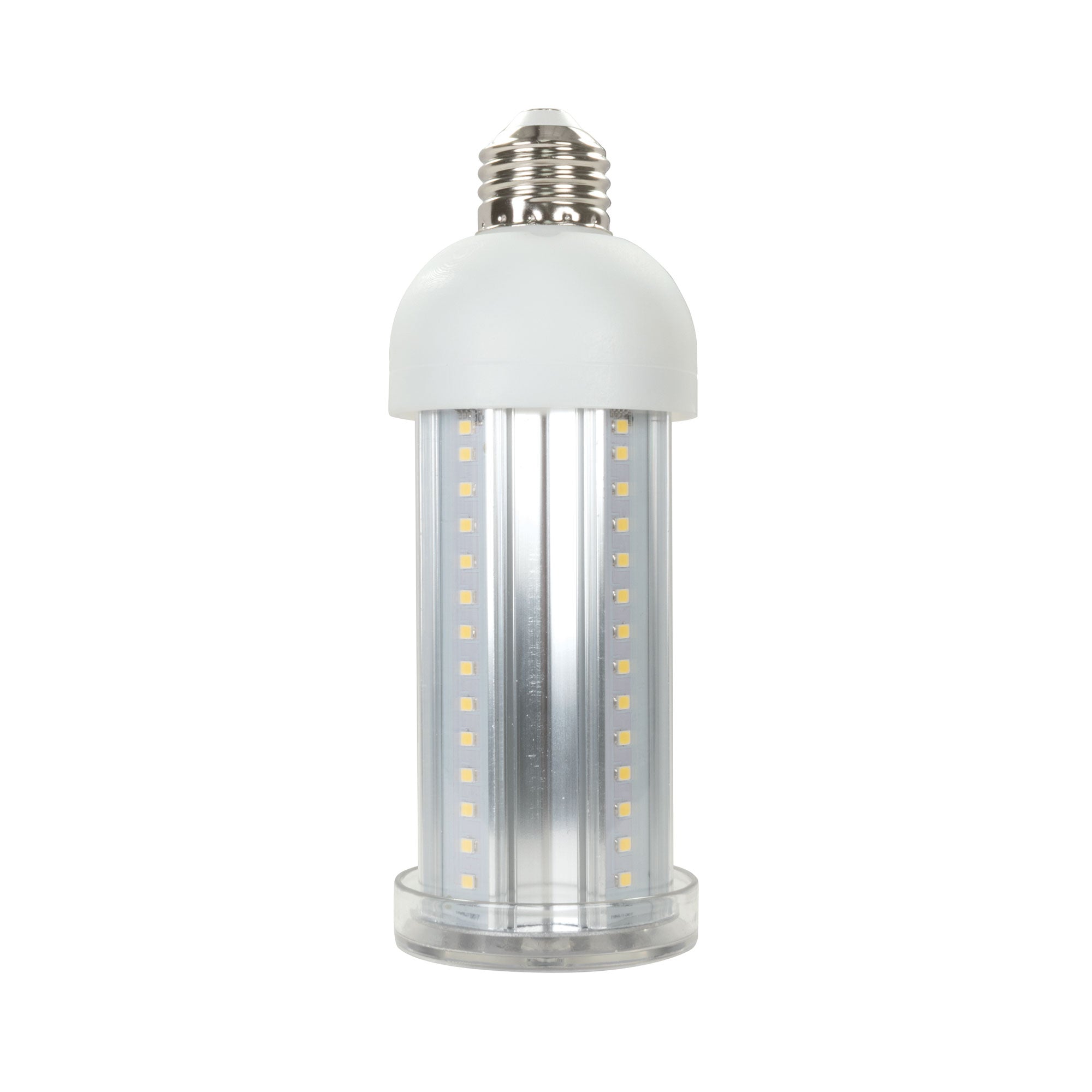

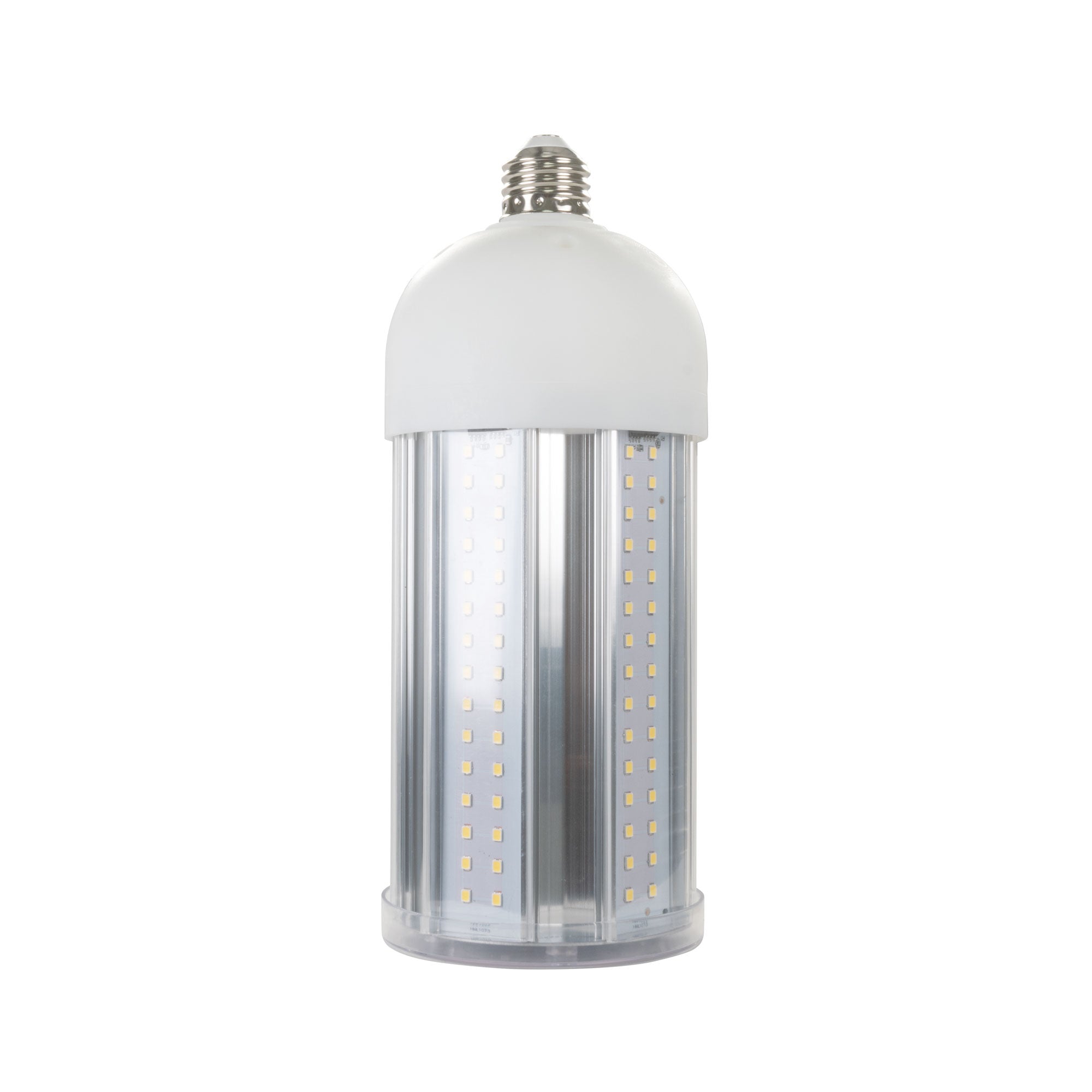

2500 lumen
5000 lumen
10,000 lumen
5200 lumen
25 watts
50 watts
100 watts
40 watts
150-watt incandescent bulb
300-watt incandescent bulb
500-watt incandescent bulb
300-watt incandescent bulb
1-car garage
2-car garage
3-car garage
2-car garage
√
√
√
√
√
This product has no reviews yet.
FAQs
What is a COB LED light, and how does it differ from other types of LED lights?
COB stands for chip on board. A corn cob light contains many rows of small LED chips in an arrangement on a cylinder shaped bulb similar to corn on the cob. Hence the name “corn cob LED bulb”. Many of our other lights use the same quality LED chips.
How do I choose the right COB LED light for my specific lighting needs?
Each space is different, depending on your ceiling height, number of light fixtures and location on the ceiling/spacing, the type of project you are trying to complete, and many more factors. As a very broad guide, you would want: between 2,500-5,000 lumen for a 1-car garage with 10ft ceilings, between 5,000-10,000 lumen for a 2-car garage with 10ft ceilings; above 10,000 lumens for a 3-car garage or any space with ceilings 12 ft and higher.
How many lumens do I need for my COB LED light, based on my intended application?
Each space is different, depending on your ceiling height, number of light fixtures and location on the ceiling/spacing, the type of project you are trying to complete, and many more factors. As a very broad guide, you would want: between 2,500-5,000 lumen for a 1-car garage with 10ft ceilings, between 5,000-10,000 lumen for a 2-car garage with 10ft ceilings; above 10,000 lumens for a 3-car garage or any space with ceilings 12 ft and higher.
Can COB LED lights be used outdoors, or are they only suitable for indoor use?
GT-Lite lights are damp rated. If used outdoors they must be protected from the weather: either installed under a porch/overhang, or in screen rooms and patios. Some COB lights are not rated for enclosed fixtures, so post lamps and other similar styles are not compatible with these bulbs. Check out our Lumen Tough line for enclosed and wet rated COB bulb options.
How do I install and mount my COB LED light properly?
Simply screw in to standard light fixtures with the E26 medium base. It is the same as a traditional A19 light bulb.
Are COB LED lights dimmable, and what types of dimming controls are available?
Corn COB LED lights are non-dimmable. Use of dimmer switches with these bulbs will void the warranty.
What is the expected lifespan of a COB LED light?
Our cob bulbs boast a 25,000-hour LED lifespan, equal to 22.8 years when used 3 hours per day, 7 days per week.
What are the optimal operating temperatures for cob bulbs?
Cob bulbs are suitable for temperature ranges from -10ºF to 104ºF (-23ºC to 40ºC).
My light says it will last a certain amount of time, how does that work?
When you see a light bulb or light fixture’s lifespan estimated, you will see that estimation typically measured in hours. This doesn’t mean that once you turn a light on, the clock is ticking, and once you hit that number of hours, the bulb is instantly shut off. The lifespan of a bulb is a rating that estimates its total operational hours. In an ideal environment, the bulb would meet or exceed the estimation, but people don’t live in perfectly controlled laboratory settings. What you can take away from these lifespan ratings is that it is just a rough estimation based on the type of LED used in each light. Customers looking to get the most out of their light should ensure that it is installed correctly, in an environment that best suits the light's design.

